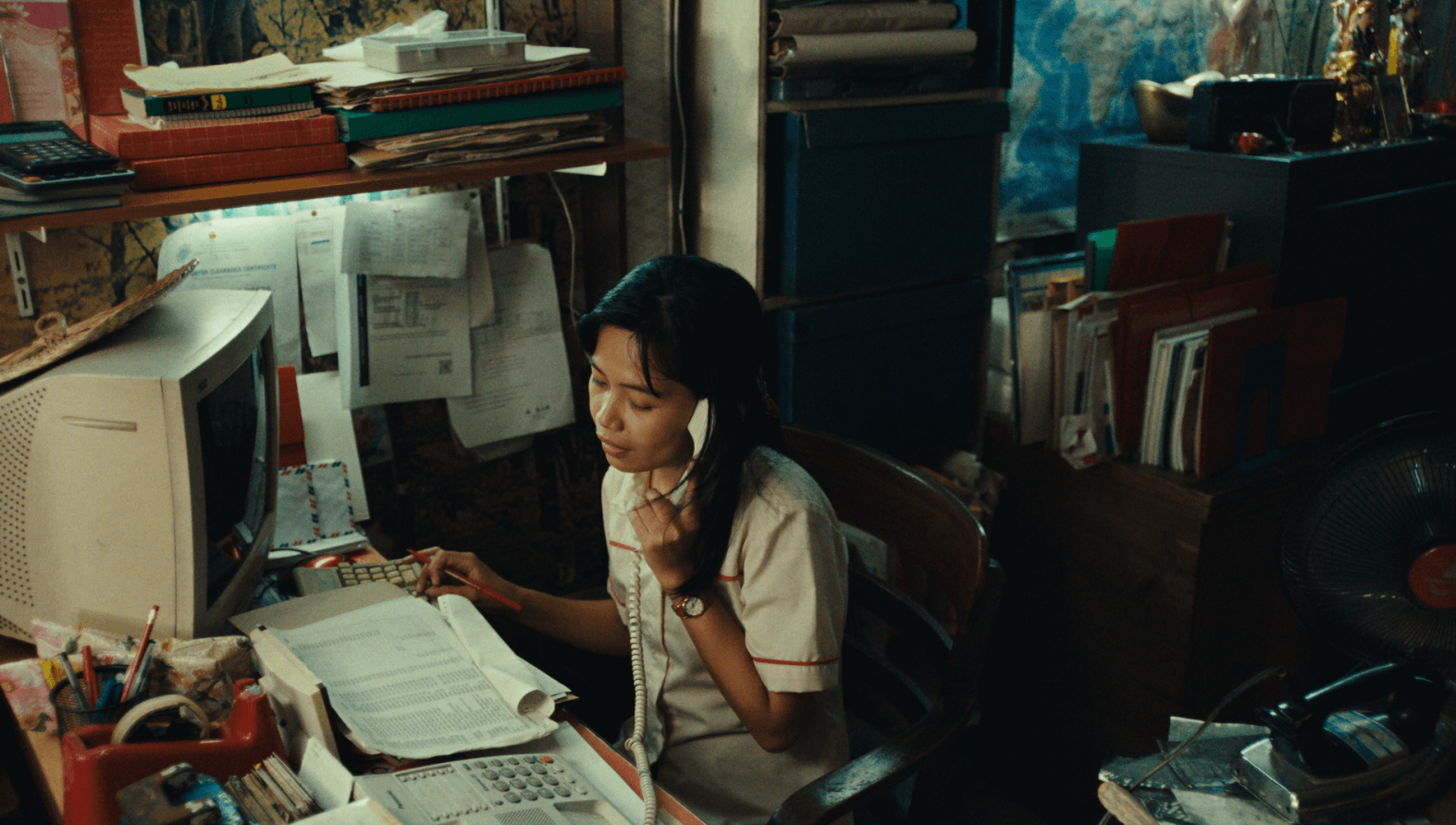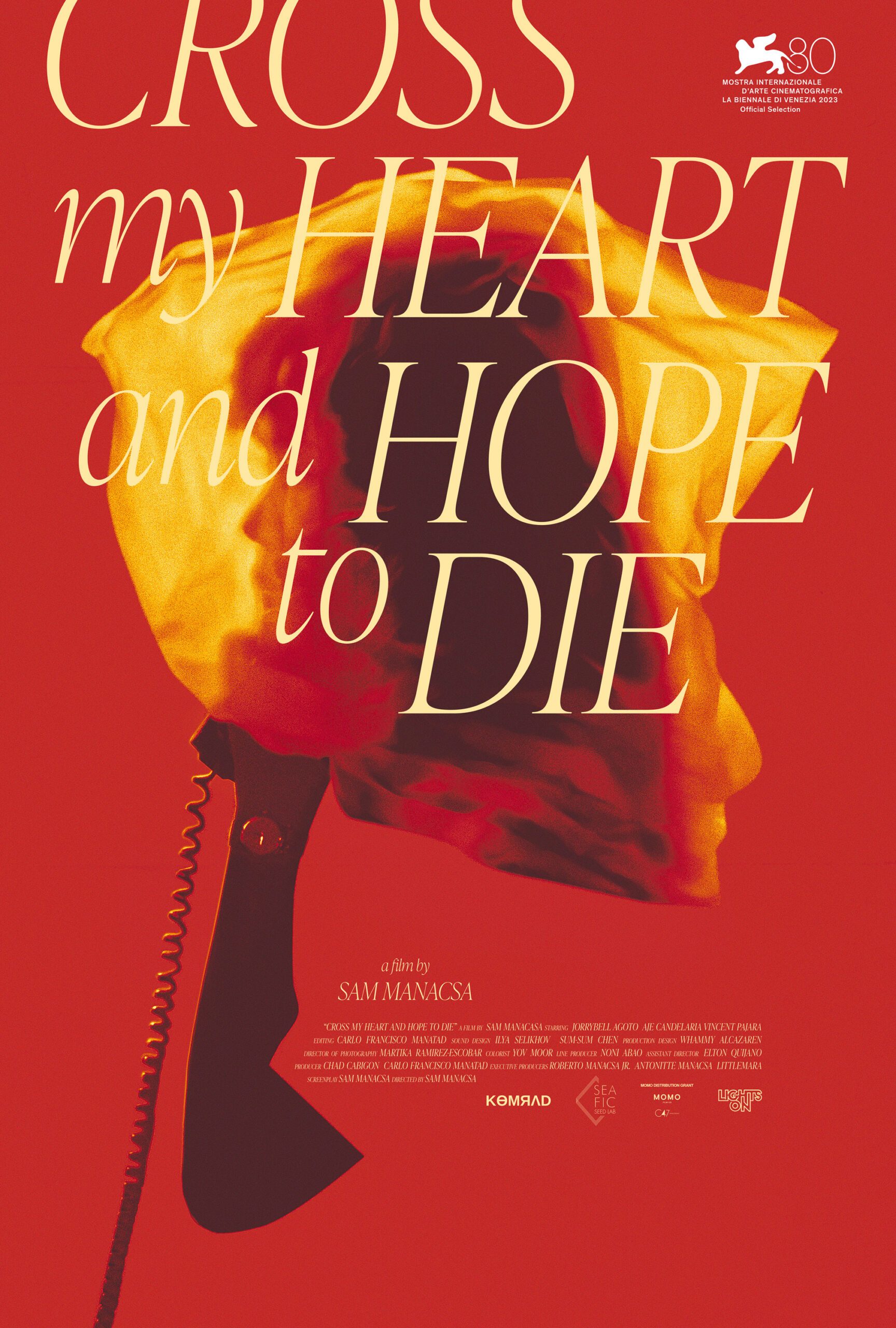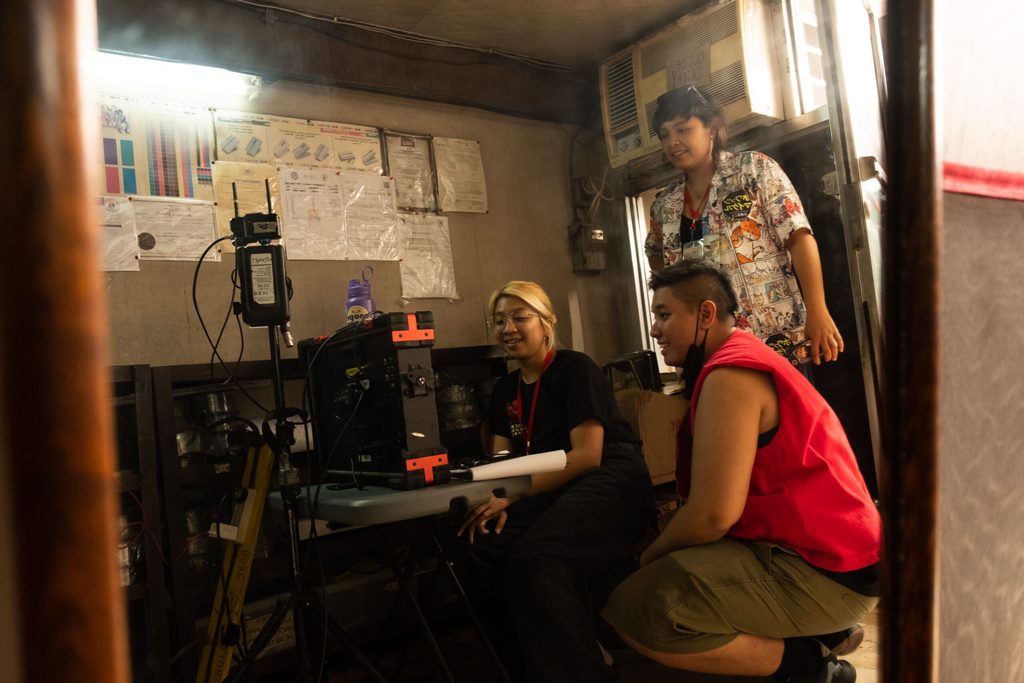SUMMARY
This is AI generated summarization, which may have errors. For context, always refer to the full article.

“It was healing, in a way,” Sam Manacsa told Rappler when asked about her experience at the Southeast Asia Fiction (SEAFIC) Film Lab, where she developed Cross My Heart And Hope To Die, the only Southeast Asian entry at this year’s Venice International Film Festival under the Orizzonti Short Film Competition. The film is set to premiere this August 30.
The Filipino director admitted that, even before she got accepted into the workshop, she was about to give up filmmaking.
“I tried joining other labs and script pitching before, but was unsuccessful.”
“I was kind of at a stage of giving up in doing anything film related during the pandemic that I even considered applying for jobs outside the industry. Being part of the lab was a turning point for me,” she added.
Manacsa also had doubts about sending the work to the highly coveted festival until the very last day of submission.
“I remember discussing with my producers Chad Cabigon and Carlo Manatad that, maybe, we don’t have to submit to La Biennale since the fee is quite expensive. But our sales agent from Lights On, Flavio Armone, insisted that we go for it. [That] there’s no harm in trying.”
And when she finally received the pleasant news, Manacsa couldn’t describe the feeling.
“I stared at the email for quite awhile, feeling very confused if this is even at all possible,” she said. “It is such a large venue for films, and I don’t think it has really sunk in yet. But I am looking forward to sharing the film with such a wide audience and hope to learn a lot from that.”
Cross My Heart And Hope To Die tells the story of Mila (played by the brilliant Jorrybell Agoto), an exploited worker who meets her love interest in hopes of trying her fortune elsewhere, only to be caught in a web of complications.
Here, Manacsa shares her journey to creating the film, her collaboration with other talented Filipino filmmakers, and the merit of the short medium.
This interview has been edited for brevity and clarity.

What is ‘Cross My Heart And Hope To Die’ all about, and what’s the inspiration behind it?
It shows the experience of a woman named Mila, who is underpaid and overworked. She meets a phone pal, but finds herself in a mess she’s not even part of to begin with. Mila hoped for better days, but things kind of went differently than what she imagined.
Someone very close to me was caught in between a whole mess that she had nothing to do with. That was where a scene from the film came from, and I kind of built the story around that. And I thought of the trauma and how a lot of that is from people and their lack of empathy. Workers can’t have a decent wage. Lives are taken in a split second. People can be self-serving that they cannot see what causes others to suffer. Those were my thoughts while writing.
Jorrybell Agoto takes on the lead role in this film. How was it working with her?
I really liked her expression and aura the first time I saw her in a casting deck for a commercial I worked on. So I had her in mind while I was developing the script.
When I finally offered the project to her, I was really glad [about] how interested she was with the script. She had a lot of questions for me, which I really appreciate because we got to build the character together. And we got to discuss more even during the shoot. She was sensitive with the character, so that helped in building motivations for her actions that can sustain a long take and make it all look natural. I’m grateful I got to work with her.

The film underwent the Southeast Asia Fiction (SEAFIC) Film Lab. How was the experience during the workshop, and how long did you actually work on the script?
It was healing, in a way. We described it as like filmmakers’ therapy with how we had to process our previous works and our disposition. The first session began with us sharing our views on filmmaking and the apprehensions we’ve had. In the second session, we got to talk more about our next projects. They can be concepts or scripts, and they respected the stages we were at. There was no pressure, so it was the perfect pace for me to breathe and think.
I’ve had the script for quite some time already. But I was grateful for all the feedback I received during our sessions that added to my confidence to decide and shoot the film.
This is just your sophomore film since ‘Kung Wala Nang Tulad Natin’ in 2016, and you’ve been mostly working as art director for films like ‘Whether the Weather is Fine’ (2021), ‘Sila-Sila’ (2019), and ‘Never Tear Us Apart’ (2018). How did this exposure help you develop your vision for ‘Cross My Heart And Hope To Die’?
These were films made by a team I know well so it wasn’t really just about working as an art director for me. I got to witness a lot of their process even during the film’s development and you see how different they can be. There’s no one way to make a film. So you learn to build yourself from all these experiences and decide how you can make things your own.
How did your fascination for cinema begin?
I was never really interested in filmmaking or anything art-related growing up. But I do like watching movies.
There was the time we had to move overseas. I was really young then and couldn’t just go out so there wasn’t much to do. I spent most of my time watching films from the rental shop down the road to ease the feeling of homesickness. In high school, I would hide under the covers and watch a film when I found it difficult to sleep. When I failed an exam in college, I used my allowance for a movie ticket. I would watch anything. I just found solace in movies.
And when I got into film school, I was exposed to even more forms of cinema. I saw films I never thought existed and that changed my disposition and how I view the medium. I got fascinated with the thought that we can make films in so many different ways, that it isn’t confined to any genre or format. I discovered more films that I can connect with.

You’ve collaborated with some of the most talented Filipino filmmakers, such as Martika Ramirez Escobar, Whammy Alcazaren, and Carlo Francisco Manatad, for this film. I’m curious about the learnings that you got from working with them.
I’ve known them since I directed my previous short film and [they] have been constants in my life ever since along with my producer, Chad Cabigon, who was actually the bridge to all of them. The level of familiarity we have with one another makes me feel at ease because there is openness in discussing our process and needs for the film.
My films are long, static shots and that one framing is very crucial in defining a scene. It’s always interesting discussing with them what we choose to see and how we present the characters because we cannot manipulate anything in post production. It’s not easy to find people you have a common ground with.
They are the people I ask if things still make sense in what I write. The way they both understand and question the vision is what helped shape the film.
Can you talk more about the struggles that you encountered during the production of the film?
It’s been seven years since I last made a film and that was my thesis. After graduating, I had thoughts that making films isn’t exactly for me because a part of me feels I don’t make sense anyway. Or I’ll go nowhere with it. So there was also that lack of confidence in myself that stopped me from making the film. It is so important to have an inner circle that pushes you to believe.
When I finally had the courage, there was the next concern: budget. I tried submitting the script for funding multiple times but I was never accepted so it was hard for us to greenlight production. It could have been my dossier, could be the concept isn’t as enticing. There are so many great short films concepts out there. It could be because of a lot of things but the rejections kind of made me lose hope again. But my producers insisted we do it and decided to fund it on our own. And with all the supportive family and friends, we found enough budget to shoot the whole film and be able to pay our crew.
Well, enough for one shooting day. We had to make sure we got what was needed within that day since we cannot afford any reshoots. And for the treatment that I had, there’s no saving the scenes in editing since it’s all a long take. So there was also that pressure with time. But I’m happy with how it all turned out.
You studied film at UP Diliman and at Asian Film Academy. How was your time there?
I got to meet great filmmakers when I was studying film in UP Diliman. These were connections that helped me grow and discover what I wanted to do.
Asian Film Academy was more of a two-week workshop where we made a short film with other filmmakers across Asia. That was in 2019 and also the same time I started to conceptualize Cross My Heart And Hope to Die. But I was put in charge of production design so a lot of my thoughts that time were into that. We also got to attend several talks and forums while we made the film so it was a really packed schedule. But the best thing about it is the connections made that we’ve kept until now. We keep in touch whenever there’s a chance.
How important is it that short filmmaking, especially in the Philippines, continues to get more support?
The more spaces we have for short films, the more we realize their merit as an art form. So people don’t think that it’s just the kind people do as an exercise in film school or a gateway to making a feature film.
You can tell so much in 20 minutes or less and they can be just as powerful. There are so many great works out there we don’t get to see since for others, they can’t be capitalized. But that’s a whole different discussion though. I do hope more venues open to screen short films often. It isn’t just for a niche audience. – Rappler.com
Add a comment
How does this make you feel?

![[Only IN Hollywood] ‘Kinds of Kindness’ cast, Lanthimos on their ‘bizarre, special’ film](https://www.rappler.com/tachyon/2024/07/KindsofKindness-Emma-Stone-Yorgos-Lanthimos-and-Jesse-Plemons-at-the-New-York-premiere-of-Kinds-of-Kindness-Searchlight-Pictures11.jpg?resize=257%2C257&crop=238px%2C0px%2C853px%2C853px)
![[Only IN Hollywood] Producer Alemberg Ang reveals details on Isabel Sandoval’s ‘Moonglow,’ other projects](https://www.rappler.com/tachyon/2024/06/AlembergAng-Alemberg-Ang-Isabel-Sandoval-and-Arjo-Atayde-on-set-of-their-Moonglow-set-in-the-60s-and-70s.-Contributed-Photo.jpg?resize=257%2C257&crop_strategy=attention)
![[Only IN Hollywood] Kevin Costner’s big financial gamble to make not one but four ‘Horizon’ films](https://www.rappler.com/tachyon/2024/06/kevin-costner-standing-ovation.jpg?resize=257%2C257&crop=187px%2C0px%2C853px%2C853px)





There are no comments yet. Add your comment to start the conversation.